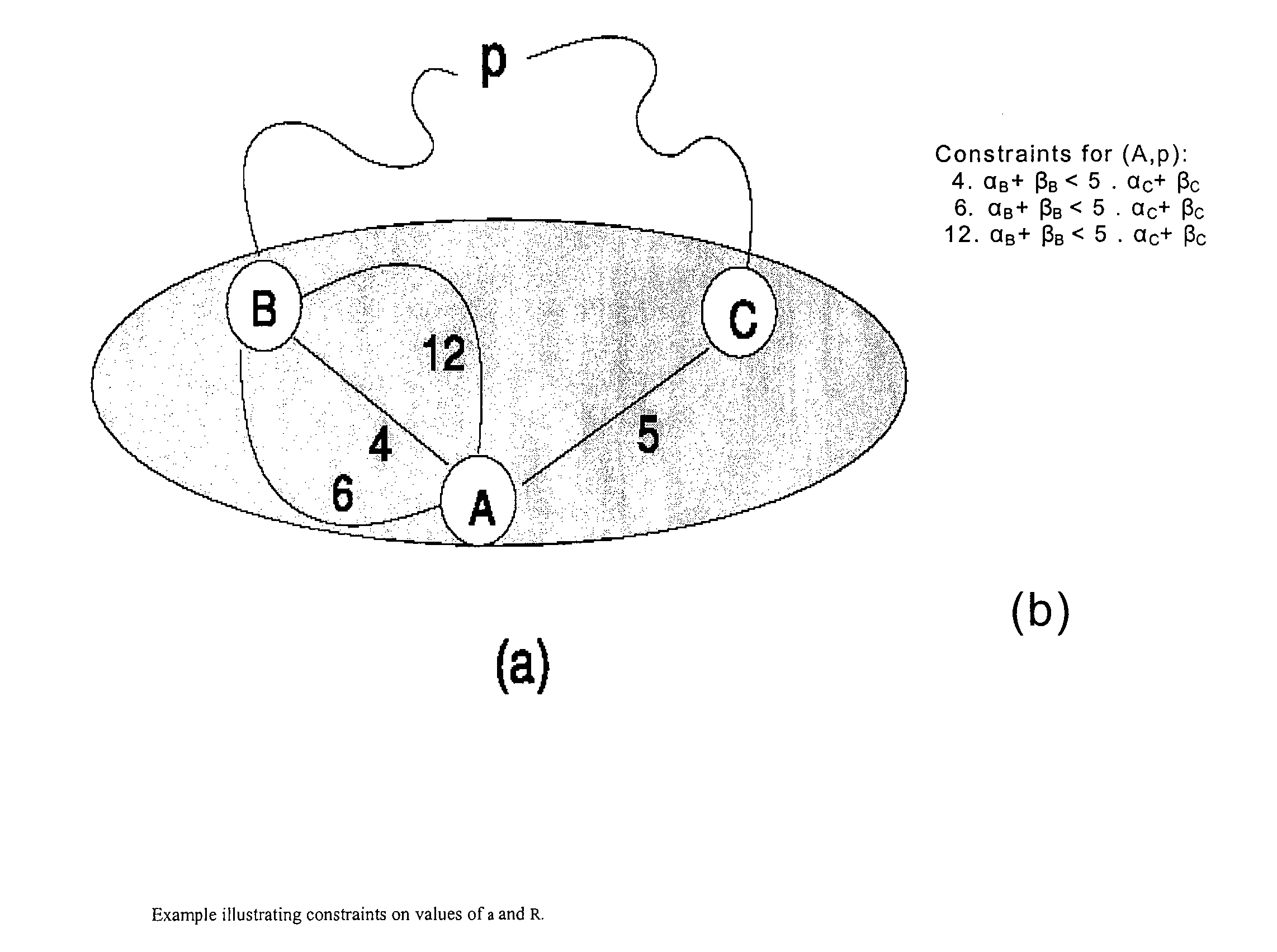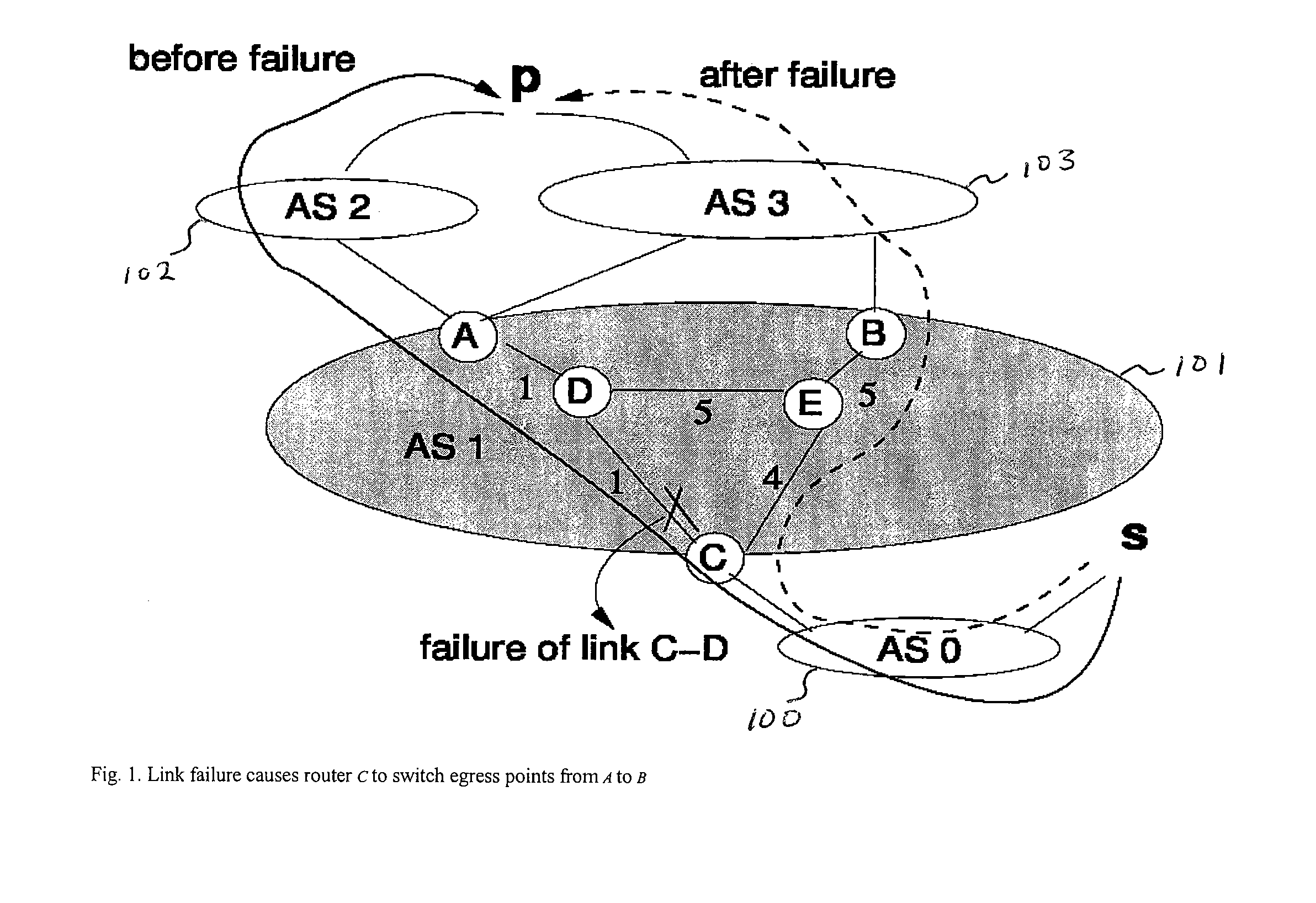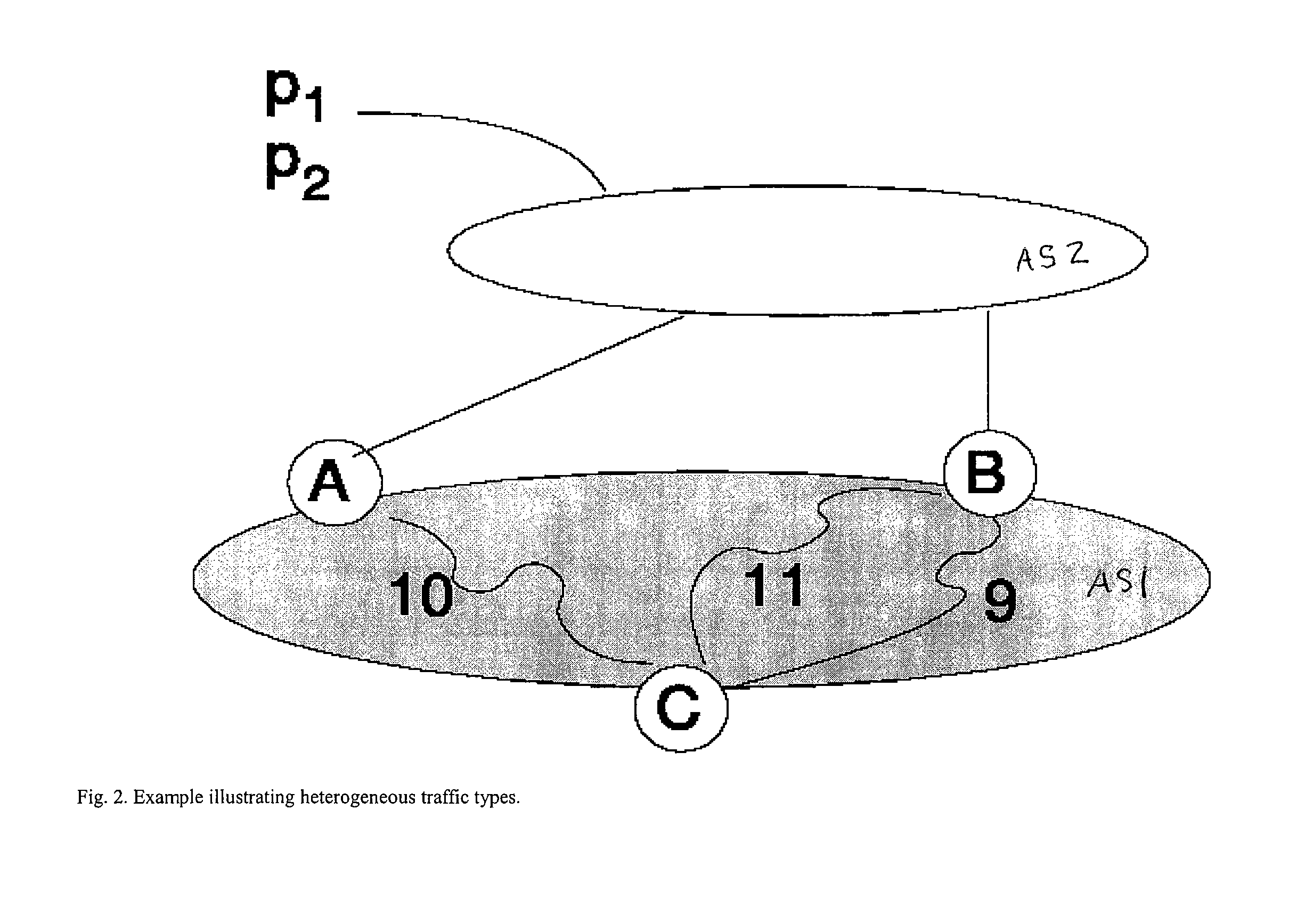[0018]For the example in FIG. 1,
router C could be preconfigured to prefer egress A over B. Then, when the C-D link fails, C would continue to direct traffic toward router A, though now using the path C, E, D, A. This would avoid triggering the traffic shift to B, changes in the downstream forwarding path, and BGP updates to neighboring domains. However, although the fixed ranking is extremely robust to internal changes, sometimes switching to a different egress point is a good idea. For example, the path C, E, D, A may have limited bandwidth or a long
propagation delay, making it more attractive to switch to egress-point B, even at the expense of causing a transient disruption. In the long term, network administrators could conceivably change the configuration of the ranking to force the traffic to move to a new egress point, but the reaction would not be immediate. Similarly, the administrators could reconfigure the IGP
metrics or BGP policies to redistribute the
traffic load, at the expense of searching for a suitable solution, reconfiguring the routers, and waiting for the
routing protocol to converge.
[0019]Hot potato and fixed ranking mechanisms for selecting egress points represent two extremes in trade-off between robustness and automatic
adaptation. Hot-potato routing adapts immediately to internal routing changes (however small), leading to frequent disruptions. Imposing a fixed ranking of egress points, while robust to topology changes, cannot adapt in real time to critical events. Neither mechanism offers sufficient control for network administrators trying to engineer the flow of traffic and plan for maintenance.
[0021]In a preferred embodiment of the present invention, candidate egress points are compared based on a weighted sum of the IGP distance and a constant term. The configurable weights provide flexibility in deciding whether (and how much) to base BGP decisions on the IGP
metrics.
Network management systems may apply optimization techniques to automatically set these weights to satisfy network-level objectives, such as load balancing objectives and the minimization of propagation delays. To ensure consistent forwarding through the network, lightweight tunnels are used to direct traffic from the
ingress router to the chosen egress point. The new preferred method, according to the present invention, will be referred to herein as TIE (Tunable Inter-domain Egress) because it controls how routers break ties between multiple equally-good BGP routes. TIE is both simple (for the routers) and expressive (for network administrators). No new protocols or any changes to today's routing protocols are introduced with TIE, making it possible to deploy at one autonomous system at a time and with only minimal changes to the BGP decision logic on IP routers. Thus, one aspect of the present invention is to provide a mechanism for egress-point selection that is flexible enough to control the flow of traffic in
steady state, while responding automatically to network events that would degrade performance.
[0022]In accordance with one aspect of the present invention, TIE provides a flexible mechanism for egress-point selection. In particular, the TIE mechanism is: (i) flexible in balancing the trade-off between sensitivity to IGP changes and adaptability to network events, (ii) computationally easy for the routers to execute in real time, and (iii) easy for a higher-level
management system to optimize based on diverse network objectives.
[0023]In accordance with another aspect of TIE, network-wide objectives may be met. Exemplary problems are suggested and are solved easily using TIE. First, sensitivity to internal topology changes is minimized, subject to a bound on
propagation delay, using
integer programming to tune the weights in the TIE mechanism. Second, load is balanced in the network without changing the IGP
metrics or BGP policies, by using multi-commodity-flow techniques to move some traffic to different egress points than would be selected using prior art techniques.
[0024]In particular, TIE has been evaluated on two backbone networks, Abilene and a large tier-1 ISP, using traffic, topology and routing data from these two backbone networks. Results indicate that TIE reduces sensitivity to internal topology changes while satisfying network-wide objectives for load and
delay.
 Login to View More
Login to View More  Login to View More
Login to View More 


